
Growing Good
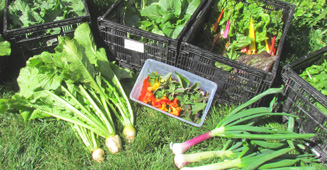
Contributor

[sidebar]Mendocino Coast Botanical Gardens is open throughout the year. For specific details and information about Art in the Garden, an annual fundraiser featuring a juried showcase of fine art in various media, culinary, and edible arts, and handcrafted artisan-made products with a botanical theme, held this year on Saturday August1, 2015.[/sidebar]
In the early pioneer days of the North Coast of California, before bridges and national highways, a farmstead was established on a tract of land about six miles north of the town of Mendocino. The Parish family lived there in the mid 1800s and fished and farmed to meet their basic needs. They located their home and garden about one quarter mile back from the ocean and planted a windbreak; rumor has it that early California horticulturist Luther Burbank provided the apple trees for their orchard. Today that tract of land is part of the forty-seven acre Mendocino Coast Botanical Gardens and that vegetable garden has a new life providing food for The Food Bank of Fort Bragg and Rhody’s Garden Café, a popular gathering place located within the Garden. The vegetable garden that began its life providing sustenance for a family now provides healthy and nutritious food for members of our larger community.
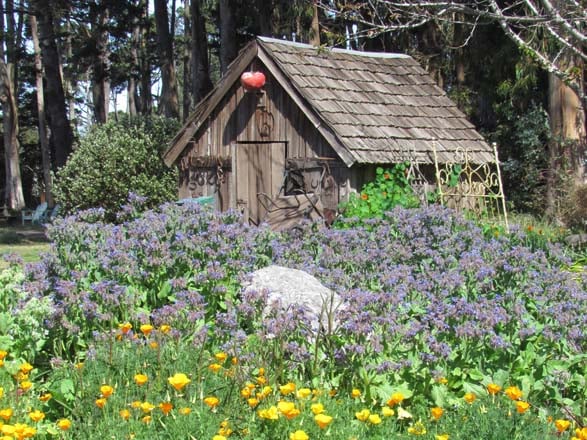
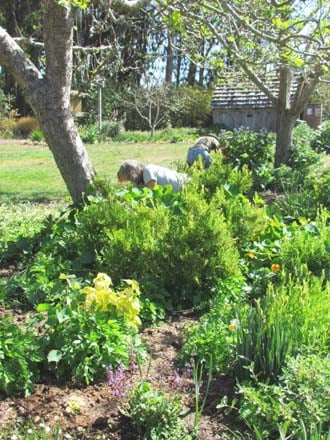
The Mendocino Coast Botanical Gardens is fortunate to have a wealth of volunteer gardeners who enjoy working the earth and feel that cultivating our vegetable garden puts them in touch with the deeper rhythms of nature. Twenty years ago, our then head gardener and a group of these wonderful volunteers re-introduced a vegetable garden near the old farmhouse where they experimented with new and heritage varieties, focusing on vegetables, herbs, and fruits that would thrive in our coastal climate. Working with plants they started at home, these loyal volunteers established a completely organic, verdant showcase garden behind a sturdy deer fence that demonstrated for visitors the delicious possibilities of growing in our mild climate. Moderately deer-resistant pumpkins and squash were added to remnants of the earlier apple orchard that remained outside the fencing.

Efforts to improve the soil began with the initial planting in 1995. The native soil of the Gardens is mostly sand on top of shale, so planting in raised beds significantly improves crop production. Today, all plantings are augmented with finished compost from our onsite composting operation. Weeds and refuse from the Gardens are chipped and combined with spent hops and grain donated by North Coast Brewing, our local producer of excellent artisan brews. This finished compost has proven to be magic throughout the Gardens and serves as a productive example of a partnership that helps both organizations and the community.
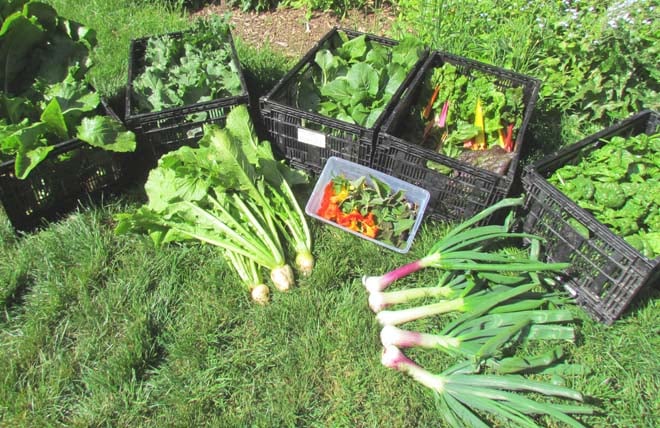
From the beginning, our local Food Bank has received most of the vegetable garden’s bounty. Thanks to a recent fundraising drive spearheaded by philanthropic businessman Bill Friedman, deer fencing has been expanded to enclose a much larger area and our vegetable garden has more than tripled in size, and produce donated to The Food Bank has increased in kind.
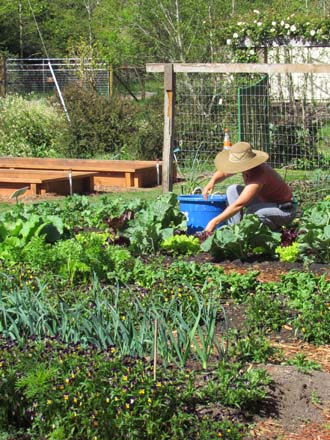
The vegetable garden and orchard is a destination within the Gardens and the gardener in charge of the space says that it feels like a true community garden. A team comprised of expert garden staff, volunteers, and noted horticulturists designed the newly expanded growing area. The plan includes a grand entrance arbor that will eventually be draped with kiwi vines, inviting visitors to venture into the planting area and providing a link with the rest of the Gardens. Special features within the garden engage visitors, especially children; a play area and scrumptious edibles like strawberries and raspberries surround a tiny house at the edge of a bog. Other perennial crops such as rhubarb, asparagus, and artichokes have moved to beds surrounding the west lawn, freeing up space in raised beds for crops more in need by The Food Bank.
Throughout the Gardens we work with natural systems. This effort is particularly apparent in the vegetable garden where organic growing practices integrate biointensive and permaculture gardening principles. Medicinal herbs and pollinator plants provide visual interest, important companion plants, and invite beneficial insects into the landscape. Hugelkultur mounds provide perfect conditions for cultivating squash and pumpkins. And winter cover crops help us grow the soil.
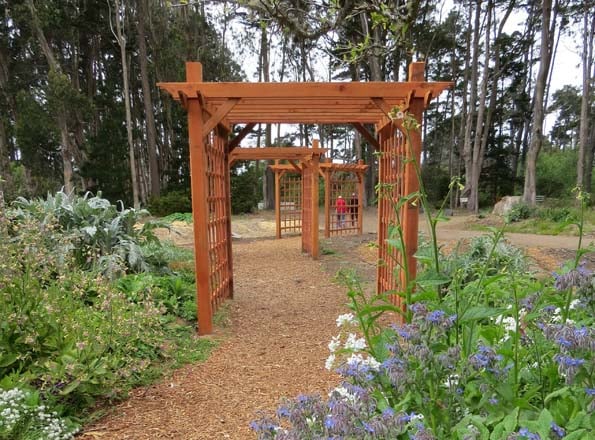
California’s continuing drought has brought home the urgency of establishing a comprehensive new water system for the Gardens. By the end of last summer only three of our seven wells were producing and the creek from which we have almost unlimited rights was dangerously low. Water pressure has dropped so much from the back to the front of the gardens that watering has to be completed a small section at a time. Mendocino Coast Botanical Gardens is embarking on a five-year project to dig a new deep water well, develop new water storage, install intake systems that will better filter sediment, and replace more than four miles of underground pipe.
Our forty-seven acres of botanical gardens represents a rich and diverse set of ecosystems. Each is distinctly different from one another, but relies on our sensitive management of the whole. It is our belief that a healthy garden is the best and first defense against diseases and pathogens. The diversity of our habitats and the beauty and health of our Gardens give all of us great satisfaction. We invite you to visit, taste, learn, and enjoy.
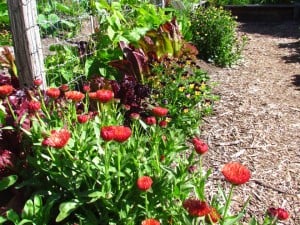
Rhody’s Garden Café represents the best of the Gardens and the values by which we operate. From late spring to early fall Rhody’s provides light meals and treats for visitors. Fresh herbs and flowers garnish each plate and veggies make their way into soups, salads, and main courses. The cafe’s menu reinforces a farm to table ethos and makes fresh and healthy food delectable. The response by locals and visitors alike has been overwhelmingly positive. Rhody’s is a popular place to meet and share a meal with friends and family.

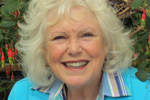









Responses